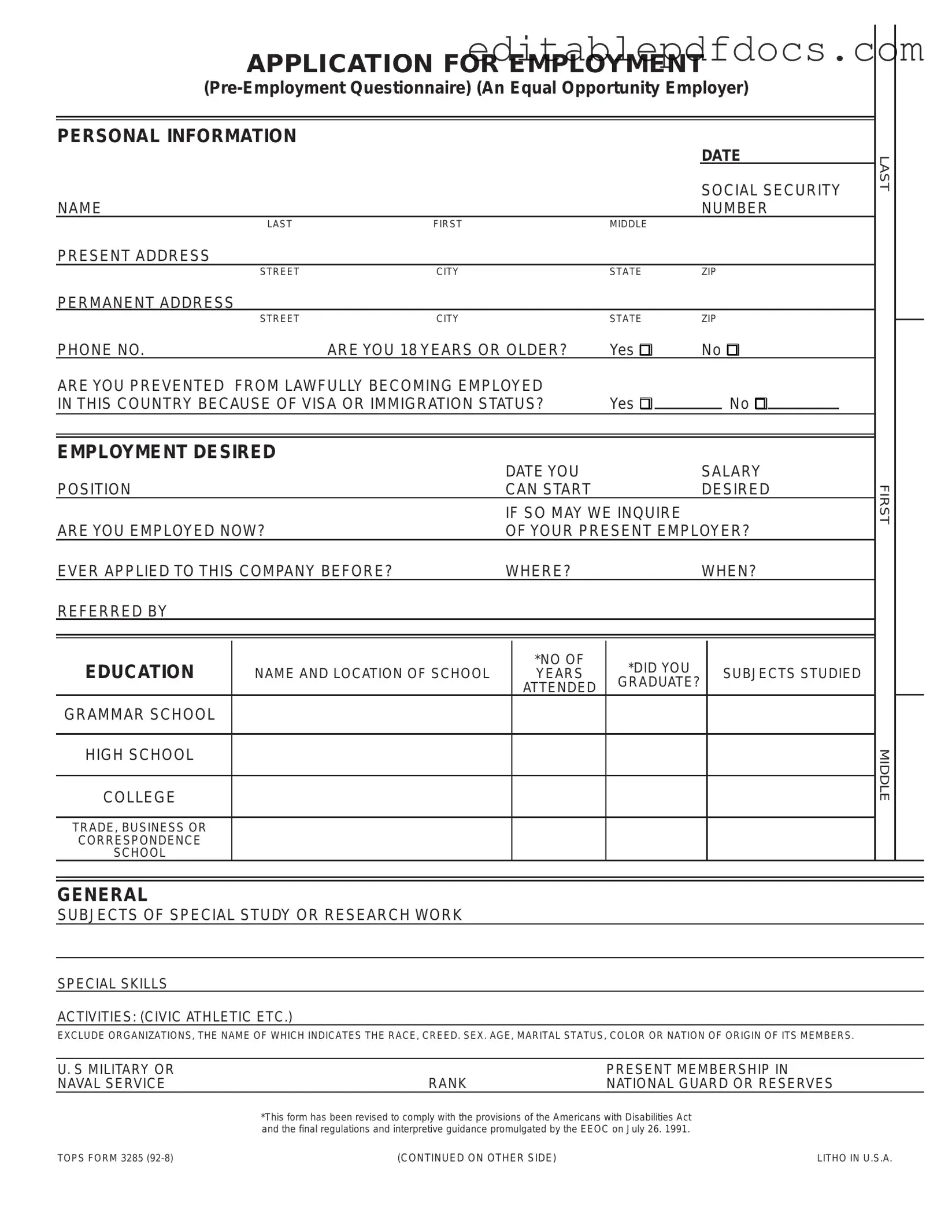Filling out an employment application can seem straightforward, but many people make common mistakes that can affect their chances of landing a job. One frequent error is leaving sections of the application blank. Employers often look for complete information to gauge a candidate's attention to detail. When applicants skip questions or fail to provide requested information, it can raise red flags about their commitment or thoroughness.
Another mistake is providing inaccurate or outdated contact information. If an employer cannot reach a candidate due to incorrect phone numbers or email addresses, that candidate may miss out on interview opportunities. Always double-check that your contact details are current and correct before submitting the application.
Some applicants fail to tailor their applications to the specific job they are applying for. Using a generic application without addressing the job description can make it seem like the applicant is not genuinely interested in the position. Highlighting relevant skills and experiences that align with the job requirements can significantly improve one's chances of standing out.
Additionally, many people neglect to proofread their applications. Spelling and grammatical errors can create a negative impression. Taking the time to review the application for mistakes shows professionalism and attention to detail. It is also helpful to have someone else read the application to catch errors that may have been overlooked.
Another common oversight is failing to sign the application. Many forms require a signature to verify the information provided is accurate. Omitting this step can result in the application being considered incomplete, which could lead to disqualification from the hiring process.
Some applicants also underestimate the importance of providing a detailed work history. Simply listing job titles without describing responsibilities and achievements can leave employers wanting more information. It is essential to provide context around past roles to help employers understand the applicant's qualifications better.
In addition, individuals sometimes forget to include relevant references. Employers often want to speak with previous supervisors or colleagues to gain insights into an applicant's work ethic and skills. Providing references who can vouch for your abilities can strengthen your application.
Another mistake is not following the application instructions carefully. Each employer may have specific requirements for how to submit the application, such as file formats or submission methods. Ignoring these instructions can lead to delays or outright rejection of the application.
Lastly, applicants may overlook the importance of including a cover letter. While not always required, a well-crafted cover letter can provide additional context for the application and express enthusiasm for the position. It’s an opportunity to make a personal connection with the employer and highlight unique qualifications.
